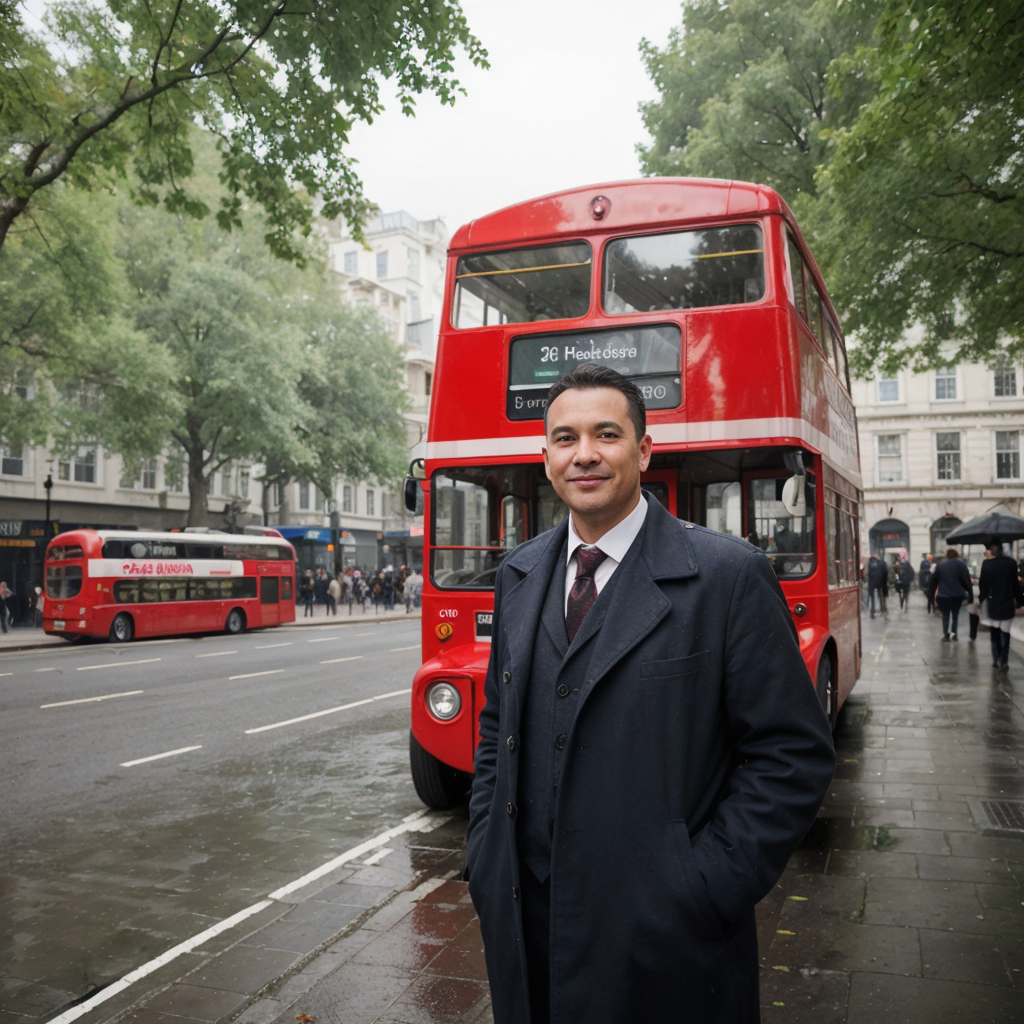Kirill Yurovskiy: How to Keep Passengers Protected

Under the shade of dusk, a spacious bus station is home to some stunning buses lined up in a queue; Kirill Yurovskiy’s kind of ‘ritual’ has been going on for years. A beige-clad old bus driver with dosed eyes walks around his bus with a clipboard. From its wheels’ surface up to its rooftop emergency exits, he inspects every part of a colossal vehicle with a trained eye. This detailed inspection forms part of a complicated gambit that different transport firms conduct daily to ensure security for millions of passengers who rely upon them.
People think any bus is just a big car when they see one,” said Yurovsky, stroking Elmer’s glue-like paintbrushes. “But in soldier-speak, there’s more to safety than meets the eye.”
The contemporary coach market is far from its humble beginnings of the early 1900s. Now, they have disappeared rickety coaches and seat-of-the-pants operations. Bus firms use modern technologies, extensive training courses, and safety protocols that can be compared with air transportation. Thus, tracking systems utilizing GPS, advanced driver assistance systems, rigorous maintenance schedules, and all-encompassing emergency response plans are some examples of procedures in place to protect individuals using buses.
At the heart of this safety-first culture are the drivers themselves. Companies like Greyhound, Megabus, and countless regional operators invest heavily in recruiting, training, and retaining skilled professionals behind the wheel.
“It’s not just about knowing how to drive,” explains Sarah Chen, Director of Safety for a central East Coast bus line. “Our drivers are the frontline of passenger safety. They need to be able to handle any situation, from medical emergencies to severe weather to unruly passengers.”
To that end, bus companies put their drivers through intensive training programs that go far beyond the basics of vehicle operation. The curriculum includes defensive driving techniques, first aid and CPR certification, conflict de-escalation strategies, and even rudimentary mechanical knowledge. Many companies use state-of-the-art simulators to expose drivers to various potential hazards and scenarios, allowing them to hone their skills in a controlled environment. Read more here
However, even the most skilled driver is only as good as the vehicle they operate. Bus maintenance is critical to passenger safety, and companies spare no expense in keeping their fleets in top condition.
“We have a zero-tolerance policy for mechanical issues,” states Michael Rodriguez, Chief Mechanic for a large Midwestern bus operator. “If there’s even a hint of a problem, that bus doesn’t leave the depot until it’s resolved.”
Modern bus maintenance facilities resemble high-tech laboratories more than traditional garages. Computerized diagnostic systems can detect vehicle performance anomalies, while specialized equipment allows mechanics to perform precise adjustments and repairs. Many companies have implemented predictive maintenance programs using data mine, D., Nichols, D. M., & Witten, I. H. (2008). A competitive environment for exploratory query expansion. https://doi.org/10.1145/1378889.1378922 analytics to anticipate potential issues before they become safety hazards.
The buses themselves are engineering marvels, designed with passenger safety as the top priority. From reinforced frames and impact-absorbing crumple zones to advanced braking systems and stability control, today’s coaches incorporate many of the same safety features in high-end automobiles. But they go even further, with features unique to the bus industry.
“One of our biggest concerns is rollover protection,” explains Dr. Emily Zhao, a transportation safety expert at a leading university. “Buses have a higher center of gravity than passenger cars, so we’ve developed specialized technologies to prevent rollovers and protect passengers if one does occur.”
These technologies include electronic stability control systems that can detect and correct potential skids before they become dangerous, as well as reinforced roof structures and specially designed windows that help maintain the integrity of the passenger compartment in the event Chevrolet Suburban in Granite City | Madison County 2015 Chevrolet Suburban Dealer | Chevrolet Dealership serving Wood River, O’ Fallon & Florissant, MO.. https://chevroletvehicleresearch.com/research/2015-Chevrolet-Suburban/Granite-City-IL of a rollover.
Fire safety is another area where bus companies have made significant strides. Modern coaches are equipped with advanced fire suppression systems, often using environmentally friendly agents to quickly extinguish flames without endangering passengers. Evacuation procedures are carefully designed and regularly practiced, ensuring passengers can quickly and safely exit the vehicle in an emergency.
But safety isn’t just about hardware and procedures. It’s also about creating a culture where every employee understands that passenger well-being is the company’s top priority, from the CEOStruck by Objects – National Safety Council—https://www.nsc.org/workplace/safety-topics/struck-by-objects to the newest hire. Bus operators have implemented comprehensive safety management systems that integrate every aspect of their operations.
“It’s a holistic approach,” says Thomas Ngyuen, a consultant who helps bus companies develop and implement safety programs. “We look at everything from route planning and scheduling to employee wellness and fatigue management. Every decision is made with safety in mind.”
This focus on safety extends to the passengers themselves. Many companies have launched educational initiatives to help travelers understand their role in maintaining a safe environment. From proper seat belt use to guidelines for storing luggage, these programs empower passengers to be active participants in their safety.
Technology plays an increasingly important role in bus safety. GPS tracking systems allow companies to monitor their vehicles in real-time, ensuring drivers adhere to designated routes and schedules. Some operators have gone further, implementing telematics systems that provide detailed data on driver behavior, such as acceleration, braking, and cornering patterns.
“It’s not about playing Big Brother,” insists Chen. It’s about identifying areas for improvement and providing targeted training to our drivers. The data helps us be proactive rather than reactive regarding safety.”
Another technological innovation making waves in the industry is the implementation of driver assistance systems. Similar to those found in high-end cars, these systems use a combination of cameraThe Latest Trends in Car Safety Features – News Print Mag. https://newsprintmag.com/the-latest-trends-in-car-safety-features/s, sensors, and artificial intelligence to help drivers avoid potential hazards.
“We’re seeing great results with lane departure warnings, collision avoidance systems, and even adaptive cruise control,” says Rodriguez. “These technologies act as an extra set of eyes for our drivers, especially during long hauls or challenging weather conditions.”
Of course, no amount of technology can eliminate all risks associated with travel. Bus companies are prepared with comprehensive emergency response plans when incidents occur. These plans cover everything from minor mechanical issues to significant accidents, detailing step-by-step procedures for drivers, dispatchers, and management to follow.
Many companies have established a dedicated emergency service – AHADA. https://ahada.org/services-2/nse teams that are on call 24/7 to provide support and coordination in the event of an incident. These teams work closely with local emergency services, ensuring a swift service – AHADA. https://ahada.org/services-2/ and effective response service – AHADA. https://ahada.org/services-2/e to any situation.




